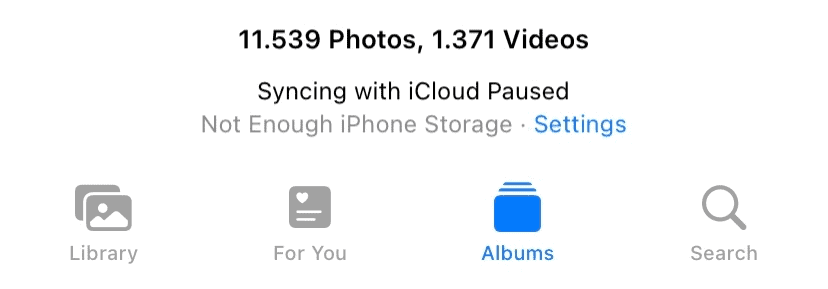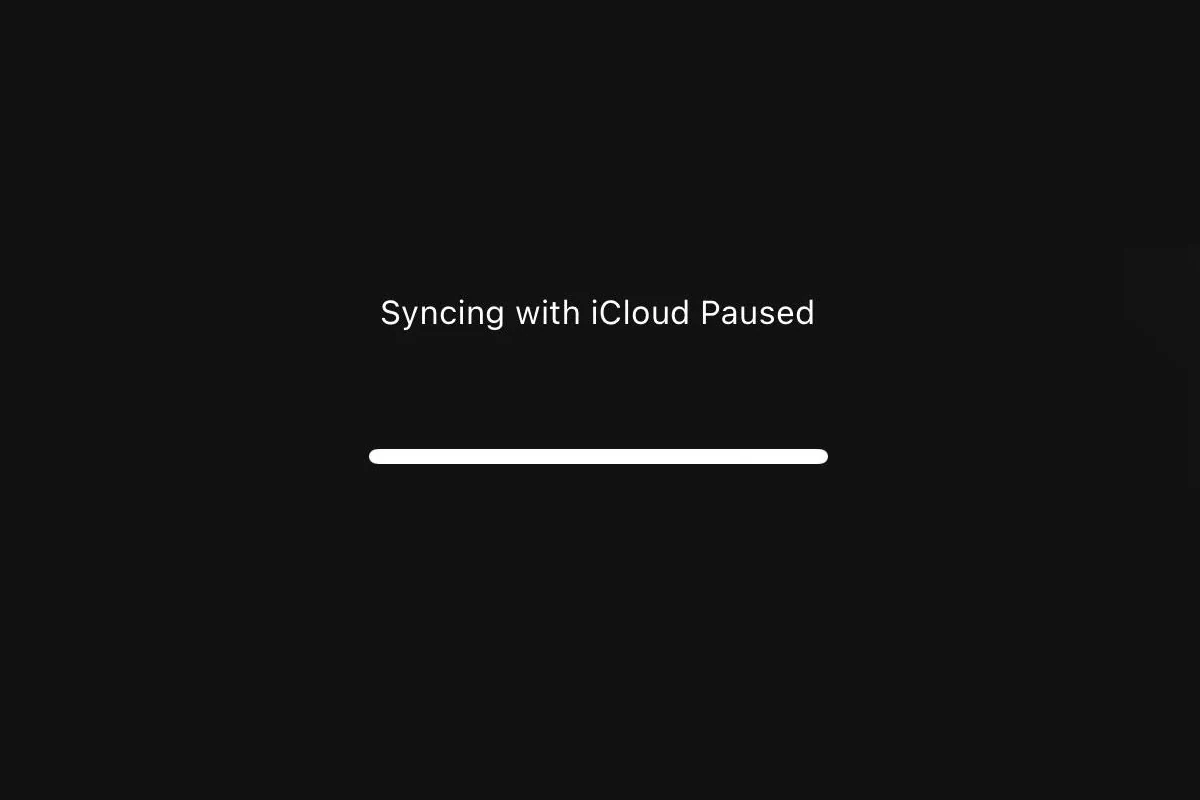iCloud syncing keeps your iPhone data up to date across devices. Sometimes this process stops working. The main reasons for paused iCloud syncing include network issues, low storage space, or outdated software.
Fixing this problem is often simple. First, check your internet connection. A weak signal can stop syncing. Next, look at your iCloud storage. If it’s full, syncing will pause. Updating your iPhone’s software can also help. These steps often get iCloud syncing working again.
If these quick fixes don’t work, you may need to try more steps. Turning iCloud sync off and on can help. You can also try signing out of your Apple ID and signing back in. These actions can jumpstart the syncing process.
Understanding Why iCloud Syncing is Paused on Your iPhone and How to Fix It
iCloud syncing ensures your data—like photos, contacts, and files—stays up-to-date across your Apple devices. But sometimes, users encounter a message saying iCloud syncing is paused on their iPhone. Here’s why that might happen and how you can resolve it.

1. Low Battery Mode
When your iPhone is in Low Battery Mode, certain background processes, including iCloud syncing, are paused to save power. To fix this:
- Go to Settings > Battery.
- If Low Battery Mode is on, toggle it off.
- iCloud syncing should resume automatically once the mode is turned off.
2. Weak or No Wi-Fi Connection
iCloud syncing requires a stable Wi-Fi connection, especially for large files like photos and backups. If the network is weak or disconnected, syncing might pause. To troubleshoot:
- Check your Wi-Fi connection by going to Settings > Wi-Fi.
- If you’re connected but experiencing slow speeds, try reconnecting or switching networks.
- Syncing should restart once a stable connection is re-established.
3. Insufficient iCloud Storage
When your iCloud storage is full, syncing pauses until more space is freed up. To check your storage:
- Go to Settings > [Your Name] > iCloud > Manage Storage.
- View what’s taking up space and delete unnecessary files or consider upgrading your storage plan.
- Once enough space is freed up, syncing should resume automatically.
4. Outdated iOS Version
Sometimes, outdated software can cause syncing issues. Apple periodically releases updates that fix bugs and improve iCloud functionality. To update iOS:
- Go to Settings > General > Software Update.
- If an update is available, download and install it.
- After updating, check to see if iCloud syncing resumes.
5. iCloud System Status
Occasionally, Apple’s iCloud servers experience downtime or technical issues. You can check Apple’s System Status page to see if there’s an outage:
- Visit the Apple System Status page.
- If there’s an outage for iCloud services, wait until Apple resolves the issue.
- Once the status is green, syncing should automatically resume.
6. Account Sign-In Issues
If there’s an issue with your Apple ID, such as a password reset, it can pause iCloud syncing. Verify your account details:
- Go to Settings > [Your Name] at the top.
- Ensure you’re signed in with the correct Apple ID and that there are no sign-in errors.
- If prompted, re-enter your password or verification code to re-establish the connection.
Quick Solutions for Common iCloud Syncing Problems
| Issue | Solution |
|---|---|
| Low Battery Mode | Turn off Low Battery Mode under Settings > Battery |
| Weak Wi-Fi | Reconnect to a stronger Wi-Fi network |
| Full iCloud Storage | Delete unnecessary files or upgrade storage |
| Outdated iOS | Update to the latest iOS version |
| iCloud Outage | Check Apple System Status page and wait if there’s an outage |
With these quick checks and solutions, you can get iCloud syncing back on track. By understanding why syncing pauses, you’ll know exactly how to resolve it when the issue arises.
Key Takeaways
- Check internet connection and iCloud storage for quick fixes
- Update iPhone software to ensure compatibility with iCloud
- Turn iCloud sync off and on to restart the process
Understanding iCloud Syncing on iPhone
iCloud syncing keeps your iPhone data up-to-date across devices. It backs up important information and makes it easy to access files anywhere.
The Role of iCloud in iPhone Synchronization
iCloud syncs photos, contacts, calendars, and more between your iPhone and other Apple devices. It stores data online, so you can get to it from any device. This means your information stays the same no matter which device you use.
iCloud also backs up your iPhone. This saves your data in case something happens to your phone. You can set up automatic backups or do them manually.
To use iCloud, you need an Apple ID and enough storage space. Apple gives you 5GB free, but you can buy more if needed.
Common Reasons for iCloud Syncing Being Paused
Sometimes iCloud syncing stops working. Here are some usual causes:
Poor internet connection: iCloud needs the internet to work. Weak Wi-Fi or cellular data can pause syncing.
Low battery: Your iPhone might pause syncing to save power when the battery is low.
Not enough storage: If your iCloud is full, syncing will stop.
Wrong settings: Check your iCloud settings to make sure syncing is turned on for each app.
Apple ID issues: Problems with your Apple ID can stop syncing.
To fix syncing, try these steps:
- Check your internet connection
- Charge your iPhone
- Free up iCloud storage
- Review your iCloud settings
- Sign out and back into your Apple ID
If these don’t work, you might need to contact Apple Support for more help.
Troubleshooting iCloud Sync Pauses
When iCloud syncing pauses on your iPhone, it can disrupt your data flow. Several factors can cause this issue, from device settings to network problems.
Initial Checks and Device Settings
Start by checking your iPhone’s basic settings. Open the Settings app and tap your name at the top. Select iCloud and make sure iCloud Drive is on. Look for the apps you want to sync and check if they’re turned on.
Next, check your iPhone’s power settings. Low Power Mode can pause syncing to save battery. To turn it off, go to Settings > Battery and toggle off Low Power Mode.
Restart your iPhone to clear any small glitches. Press and hold the power button, then slide to power off. Wait a minute, then turn it back on.
Network and Storage Considerations
A weak internet link can stop syncing. Check your Wi-Fi or cellular connection. Try turning off Wi-Fi and using cellular data, or vice versa.
Low Data Mode can also pause syncing. To check, go to Settings > Cellular > Cellular Data Options. Make sure Low Data Mode is off.
Check your iCloud storage space. Go to Settings > [Your Name] > iCloud > Manage Storage. If you’re low on space, delete old backups or buy more storage.
Advanced Solutions for Sync Issues
If basic fixes don’t work, try these steps:
- Update iOS: Go to Settings > General > Software Update.
- Reset network settings: Settings > General > Transfer or Reset iPhone > Reset > Reset Network Settings.
- Check iCloud system status: Visit Apple’s System Status page to see if iCloud services are working.
For Messages sync issues:
- Go to Settings > [Your Name] > iCloud > Show All > Messages.
- Toggle off “Sync this iPhone”.
- Wait 10 seconds, then turn it back on.
If you see a “Waiting to Sync” message, give it time. Large amounts of data can take a while to sync.
Ensuring Ongoing iCloud Sync Functionality
Keeping iCloud sync working smoothly requires regular upkeep. Users can take steps to prevent sync issues and maintain seamless data flow across devices.
Maintaining Adequate iCloud Storage
iCloud storage space is key for uninterrupted syncing. Users get 5GB free, but this fills up fast. To avoid sync pauses:
- Check storage use in Settings > [Your Name] > iCloud > Manage Storage
- Delete old backups, photos, or files you don’t need
- Upgrade storage plan if needed (options from 50GB to 2TB)
- Turn off sync for apps that use lots of space
iCloud Photos can eat up space quickly. Consider using “Optimize iPhone Storage” to save room.
Regularly Updating System Software
Software updates fix bugs and improve sync. To keep your system current:
- Go to Settings > General > Software Update
- Turn on Automatic Updates
- Connect to Wi-Fi and plug in your device overnight
Updates may take time, but they’re worth it. They can solve sync issues and add new features.
Monitoring iCloud System Status and Account Health
Sometimes sync problems come from Apple’s end. To stay informed:
- Check Apple’s System Status page for iCloud service issues
- Look for green dots next to iCloud services
- If services are down, wait for Apple to fix them
For account health:
- Sign out of iCloud and sign back in to refresh your connection
- Go to Settings > [Your Name] > Sign Out
- Restart your device, then sign in again
If problems persist, contact Apple Support for help. They can check your account for issues not visible to users.






